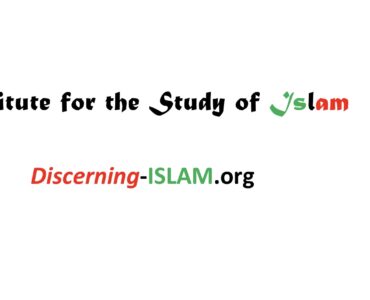
The Mahdi
The term Mahdī or al-Mahdi (divinely guided one) has come to denote a messianic figure whose presence will usher in an era of justice and true belief immediately before the end of time. The theme more or less is similar to that of Christianity, complete with seven years of tribulation. The word, Mahdi, does not occur in the Qurʿān but is a strictly honorific title applied by the earliest Muslims to the man they called the Prophet Muhammad and first four caliphs. The meaning of the term was further developed by the Shīʿīs, who applied it to Muḥammad ibn al-Ḥanafīyah (a son of the caliph ʿAlī) who organized a revolt in 685. A Shīʿī sect later came to revere this “rightly guided one” and deny his death, believing him to be in hiding. Other events in the history of Shi’ism paralleled this example — the Twelfth Imam, Muḥammad ibn Ḥasan al-ʿAskarī, who disappeared in 878, was designated a Mahdī — and so the idea evolved of a messianic deliverer (al-mahdī al-muntaẓar, the awaited Mahdī) who would return to champion the cause of his adherents.
Although the idea of a Mahdī came to play a central part in Shīʿī belief, it enjoyed no such recognition in Sunnī Islam, where trust in the consensus of the learned and faith in the community’s capacity for self-reform made such a figure doctrinally unnecessary. Rather, the concept took hold strictly in popular Sunnī belief during the early centuries of political unrest. Supporting various contenders in their claims was a large and growing body of prophetic traditions (ḥadīth) regarding the Mahdī.
Certain common themes run through these developing traditions: the Mahdī will be of the Prophet’s family, he will bear the Prophet’s name, and his father will bear the Prophet’s father’s name (i.e., he will be called Muḥammad ibn ʿAbd Allāh); he will appear when the world has reached its worst state of affairs; his reign will be a time of natural abundance, and he will spread justice, restore the faith, and defeat the enemies of Islam; miraculous signs will accompany his manifestation; and he will be generous and distribute the wealth. On many matters the traditions disagree, allowing a broad range of interpretation. In general, the Sunnī notion of a Mahdī was more that of a restorer of the faith than of an incarnation of Allah as in Shīʿī belief, and the Mahdī would be chosen for office rather than returning from hiding. Important vehicles for the spread of this idea were the writings of various Ṣūfī sages, including the influential Ibn al-ʿArabī (d. 1240).
Attesting to the popularity of the Mahdī idea is the abundance of claimants to that title in Islamic history. Muḥammad ʿUbayd Allāh (d. 934), the first Fāṭimid caliph, came to power in North Africa through a manipulation of Mahdist expectations and Shīʿī sentiment. Manifesting himself at Jabal Māssa in the Maghrib — thereafter an expected site of the Mahdī’s appearance — he claimed descent from the Prophet’s daughter Fāṭimah and was alleged to be the brother of the hidden Twelfth Imam. The founder of the Almohad reform movement in the twelfth century, Muḥammad ibn Tūmart (d. 1130), also claimed to be the Mahdī with descent from the Caliph ʿAlī. In particular, the arrival of the thirteenth Islamic century (1785–1883 AD), which had long been expected to be of great messianic importance, increased Mahdist belief. During that period at least three leaders of reform movements in West Africa — Shaykh Usuman dan Fodio of Sokoto, Shaykh Aḥmadu Bari of Masina, and al-ḤājjʿUmar Tal of the Tukolor empire — exploited Mahdist tendencies to launch their jihāds. Expectations of the Mahdī’s arrival from the East attracted waves of West African emigrants to the Nile and facilitated the rise and success of the Sudanese Mahdī Muḥammad Aḥmad (d. 1885).
Several Mahdīs meanwhile arose in Egypt, leading uprisings against French occupation and Egyptian government rule. By the end of the nineteenth century, Mahdist revolts against European imperialism were almost commonplace, occurring for example in India, Algeria, Senegal, Ghana, and Nigeria. Common to all such movements was the perceived corruption of Islamic ideals and the nefarious influence of Western political and cultural hegemony. More recently, such thinking inspired the 1979 seizure of the Grand Mosque of Mecca by a Saudi Arabian Mahdī, and Shīʿī criticism of the American-led “new world order” has also been couched in Mahdist terms. Given the emotive power of messianism and the flexible conditions of the Mahdī’s appearance, claims to that authority may be expected wherever Islamic interests are perceived to be threatened.
The Mahdi
621 – 005
Last Update: 04/2021
Copyright © 2017-2021 Institute for the Study of Islam (ISI) | Institute-for-the-study-of-Islam-org | Discerning Islam | Discerning-Islam.org | Commentaries on Islam | © 2020 Tips Of The Iceberg | © 1978 marketplace-values.org | Values In The Marketplace | are considered “Trade Marks and Trade Names” ®️ by the Colorado Secretary of State. All Rights Reserved.


